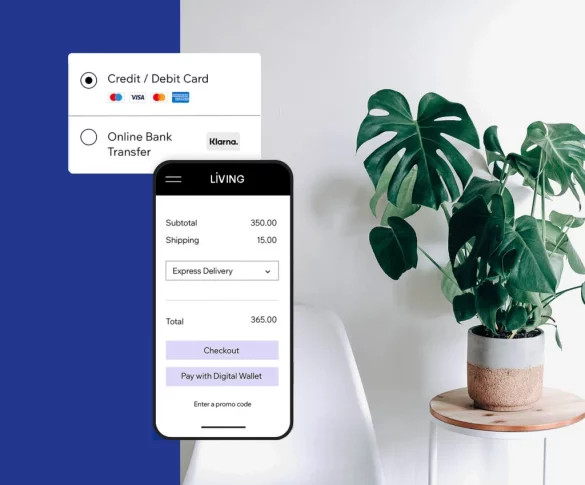website Prototyping
Website prototyping is the process of creating a preliminary version
When creating a website or web application to test and refine its design, functionality, and user experience we use website prototyping.


Here are the steps to follow to create a website prototype:
Website prototyping is the process of creating a preliminary version of a website or web application to test and refine its design, functionality, and user experience. Here are the steps to follow to create a website prototype:
- Define the purpose and goals of the website: Before you begin creating a prototype, it’s important to define the purpose and goals of the website. What problem does it solve? Who is the target audience? What actions do you want users to take on the site?
- Create a site map: A site map is a visual representation of the website’s structure and hierarchy. It shows the relationships between different pages and content elements. Creating a site map will help you plan out the website’s navigation and content.
- Wireframe the website: A wireframe is a basic, simplified layout of the website’s pages. It outlines the placement of content, navigation, and other design elements without including specific design details. Creating wireframes will help you determine the layout and content of each page.
- Design the prototype: Using the wireframes as a guide, design the prototype with specific design elements, such as color, typography, and images. Keep in mind the purpose and goals of the website and make sure the design supports those goals.
- Test and refine: Once the prototype is designed, test it to see if it meets the goals and needs of the target audience. Gather feedback and make adjustments as necessary to improve the design, functionality, and user experience.
- Build the final website: Once the prototype is refined and tested, use it as a guide to build the final website. Make sure to implement the design, functionality, and user experience changes that were identified during the prototyping process.
By following these steps, you can create a website prototype that meets the brilliant standards.
Define the purpose and goals of a website:
The purpose of a website is to provide a digital presence for a person, business, organization, or entity on the internet. The goals of a website can vary depending on the nature and objectives of the entity it represents. However, some common goals of a website may include:
- Informing: Providing information about the entity, its products, services, or mission.
- Educating: Providing educational resources to visitors on a specific topic or subject.
- Selling: Providing a platform for selling products or services online.
- Promoting: Promoting the entity, its products or services, or a cause or idea.
- Engaging: Creating an interactive platform to engage visitors, encourage feedback, and foster a community.
- Building a brand: Establishing an online identity for the entity and building brand awareness.
- Generating leads: Collecting visitor information to generate leads and follow-up sales.
- Providing customer support: Offering support resources and contact channels to help customers with their needs.
Ultimately, the purpose of a website is to serve the needs of its audience, whether that’s potential customers, clients, supporters, or anyone else looking for information or engagement with the entity it represents.
Creating a website site map
Creating a website site map involves organizing the content and structure of a website in a hierarchical format. This helps to identify the different pages, their relationships, and the overall structure of the website. Here’s a step-by-step guide to creating a website site map:
- Identify the main sections of your website: Start by listing the main sections of your website, such as the home page, about us, services, products, blog, contact us, etc. These main sections will form the top-level of your site map.
- List the sub-sections: For each main section, list the sub-sections or pages that fall under it. For example, under the “services” section, you might have pages for each individual service you offer.
- Determine the hierarchy: Once you have listed all the main and sub-sections of your website, determine their hierarchical relationship. This means deciding which pages will be linked to from the main menu, which will be nested under other pages, and which will be linked to in the footer.
- Map out the relationships: Once you have determined the hierarchy, start mapping out the relationships between the different pages. Use arrows or lines to show how each page is linked to other pages.
- Review and refine: Once you have created your initial site map, review it to ensure that it makes sense and is easy to navigate. Make adjustments as needed to improve the overall structure and organization of your website.
By following these steps, you can create a clear and organized site map for your website, which will help to guide the design and development process, and ensure that your website is easy to navigate for visitors.
Test and refining a website
Testing and refining a website is an important part of the website development process. Here are some steps you can take to test and refine your website:
- Conduct usability testing: Conduct usability testing to ensure that the website is easy to navigate, the content is easy to read, and that users can accomplish their intended goals. You can use a tool like UserTesting to conduct usability testing.
- Review website analytics: Review website analytics to identify areas of the website that are not performing well. For example, if you notice that users are leaving the website on a certain page, you can investigate why and make changes to improve the user experience.
- Get feedback: Collect feedback from users on the website to identify areas that need improvement. You can use tools like surveys, polls, and feedback forms to gather feedback.
- Refine website design: Based on user feedback and website analytics, refine the website design to improve the user experience. This could involve changes to the layout, color scheme, font size, or other design elements.
- Test website functionality: Test the website’s functionality to ensure that it is working as intended. This includes testing forms, links, and other interactive elements.
- Check website speed: Check the website’s speed to ensure that it loads quickly. Slow load times can negatively impact the user experience and lead to increased bounce rates.
- Optimize website for SEO: Optimize the website for search engines to improve visibility in search results. This includes optimizing meta tags, including keywords in the content, and improving website speed.
By taking these steps, you can ensure that your website is well-designed, user-friendly, and optimized for search engines. Continuous testing and refinement will help to improve the user experience, increase engagement, and ultimately lead to greater success for your website.
We provide the best branding, graphic design, strategy, insight, drinks, print design, art direction, creative direction, UX, UI, digital web design, development, e-commerce, support. See how we can help you.
Ready to get started?
We’re extremely proud of our website design company. We believe that a lovingly designed & developed website can drive your business to a whole new level.